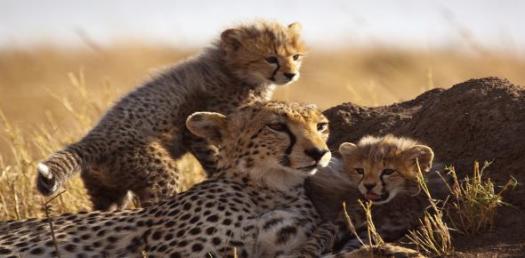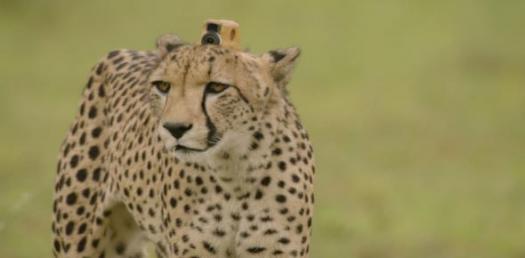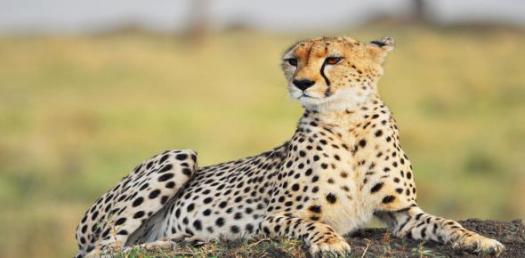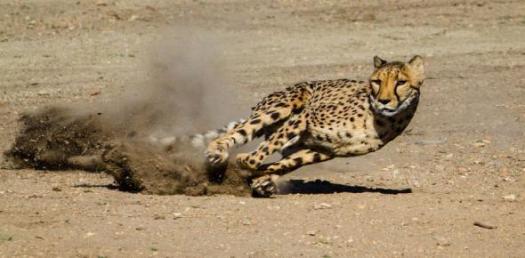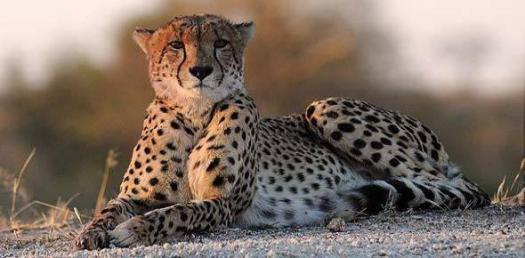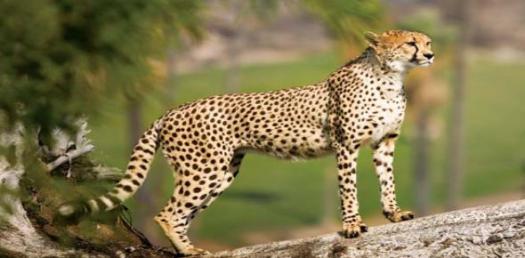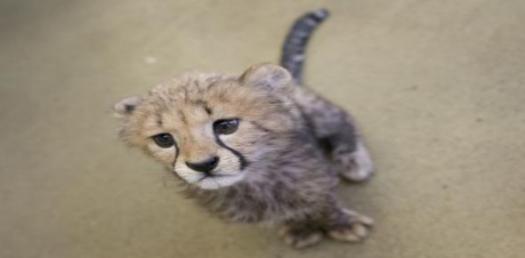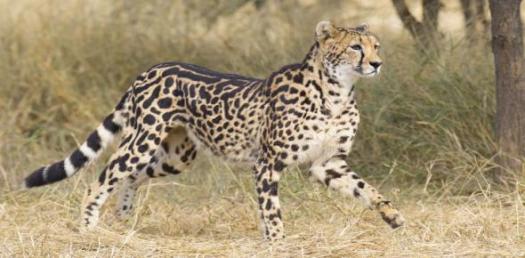Anatomy Of Cheetah! Trivia Facts Quiz
(520).jpg)
How well do you know about the anatomy of the cheetah? Test yourself with this trivia facts quiz and have fun too! Cheetahs are one of the most recognizable cats, which are especially known for their speed. Together with lions, they belong to a subfamily of cats called Felinae. They are often regarded as the fastest land animal on earth. Do you know a lot about the anatomy of this amazing animal? If yes, play this quiz and assess your knowledge here. Good luck, buddy!
- 1.
What is the color of underbelly of cheetahs?
- A.
Yellow
- B.
White
- C.
Pink
- D.
Black
Correct Answer
B. WhiteExplanation
Cheetahs have a white underbelly. This coloration serves as camouflage, helping them blend in with the tall grasses of their natural habitat. The white color also reflects sunlight, helping to keep the cheetah cool in hot temperatures. Additionally, the white underbelly provides a stark contrast to the spotted pattern on the rest of the cheetah's body, making it easier for them to hide and ambush prey.Rate this question:
-
- 2.
Which of these animals is most similar with cheetahs in structure?
- A.
Antelope
- B.
Lion
- C.
Leopard
- D.
Jackal
Correct Answer
C. LeopardExplanation
Leopards are the most similar to cheetahs in structure. Both cheetahs and leopards belong to the same family, Felidae, and share similar physical characteristics such as a sleek body, long legs, and a flexible spine. They also have similar hunting techniques, relying on their speed and agility to chase down prey. While lions and jackals are also carnivores, they have different body structures and hunting strategies compared to cheetahs. Antelopes, on the other hand, are herbivores and have a completely different body structure.Rate this question:
-
- 3.
What genus do cheetahs belong to?
- A.
Felidae
- B.
Felinae
- C.
Acinonyx
- D.
Leo
Correct Answer
C. AcinonyxExplanation
Cheetahs belong to the genus Acinonyx.Rate this question:
-
- 4.
How many teeth do cheetahs have?
- A.
24
- B.
30
- C.
45
- D.
35
Correct Answer
B. 30Explanation
Cheetahs have 30 teeth. They have a specialized dental structure that allows them to have a large number of teeth compared to other big cats. Their teeth are sharp and designed for gripping and tearing prey. The large number of teeth helps them to efficiently catch and kill their prey.Rate this question:
-
- 5.
What is the arrangement of highly concentrated nerve cells in eyes of cheetahs called?
- A.
Visual centre
- B.
Blindspot
- C.
Visual streak
- D.
Aqueous humor
Correct Answer
C. Visual streakExplanation
The arrangement of highly concentrated nerve cells in the eyes of cheetahs is called the visual streak. The visual streak is a specialized area in the retina of the eye that contains a high density of photoreceptor cells, allowing cheetahs to have excellent visual acuity and focus on distant objects. This adaptation is crucial for their hunting abilities, as it enables them to spot prey from afar and accurately track their movements.Rate this question:
-
- 6.
What is the diploid number of chromosomes in cheetahs?
- A.
28
- B.
38
- C.
45
- D.
40
Correct Answer
B. 38Explanation
The diploid number of chromosomes in cheetahs is 38. This means that cheetahs have 38 pairs of chromosomes in their cells, with each pair consisting of one chromosome from each parent.Rate this question:
-
- 7.
When was the generic name, Acinoyx given to cheetahs?
- A.
1828
- B.
1981
- C.
1803
- D.
1834
Correct Answer
A. 1828Explanation
In 1828, the generic name "Acinonyx" was given to cheetahs.Rate this question:
-
- 8.
What is the scientific name for cheetah?
- A.
Felis jubatus
- B.
Felis Leo
- C.
Leo Agneria
- D.
Acocinyx kalotifek
Correct Answer
A. Felis jubatusExplanation
The correct answer is Felis jubatus. This is the scientific name for cheetah.Rate this question:
-
- 9.
Who proposed the name "Acinonyx" for cheetahs?
- A.
Mark Jackson
- B.
Carl Jaeckes
- C.
Joshua Brookes
- D.
Martin Clark
Correct Answer
C. Joshua BrookesExplanation
Joshua Brookes proposed the name "Acinonyx" for cheetahs.Rate this question:
-
- 10.
Which of these is not a subspecies of cheetah?
- A.
Brown European cheetah
- B.
South African cheetah
- C.
Asiatic cheetah
- D.
North East African cheetah
Correct Answer
A. Brown European cheetahExplanation
The correct answer is Brown European cheetah. This is because there is no subspecies of cheetah known as the Brown European cheetah. The other options listed, South African cheetah, Asiatic cheetah, and North East African cheetah, are all recognized subspecies of cheetah.Rate this question:
-
Quiz Review Timeline +
Our quizzes are rigorously reviewed, monitored and continuously updated by our expert board to maintain accuracy, relevance, and timeliness.
-
Current Version
-
May 21, 2023Quiz Edited by
ProProfs Editorial Team -
Jun 18, 2019Quiz Created by
Gregorynaomi
- Amphibian Quizzes
- Bird Quizzes
- Cat Quizzes
- Dinosaur Quizzes
- Dog Quizzes
- Emperor Penguin Quizzes
- Endangered Species Quizzes
- Fish Quizzes
- Goat Quizzes
- Hamster Quizzes
- Horse Quizzes
- Insect Quizzes
- Invertebrate Quizzes
- Mammal Quizzes
- Mouse Quizzes
- Nematode Quizzes
- Pet Quizzes
- Pig Quizzes
- Rabbit Quizzes
- Reptile Quizzes
- Sheep Quizzes
- Wolf Quizzes
- Zoo Quizzes



